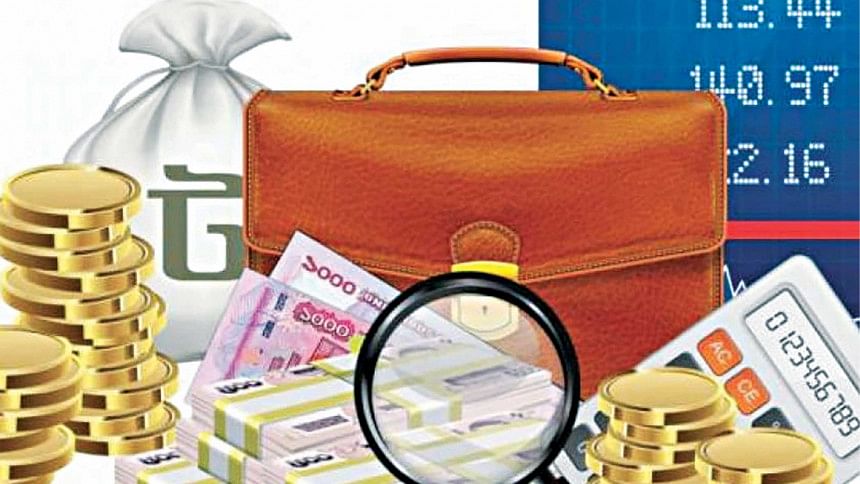Financing the economic growth of Bangladesh

After a downturn due to the ongoing Covid-19 pandemic, Bangladesh's economy has been trying to get back on track and has succeeded in some cases. The official statistics show that the growth rate dropped to 3.5 percent in FY 2019-20 from 7.9 percent in FY 2018-19 due to Covid-19. However, it was estimated to grow by 5.4 percent in FY 2020-21, and is projected to grow by 7.2 percent in FY 2021-22, according to government statistics. An economy which has been growing fast, defying all challenges, requires financial resources, among other needs. An important source for such finance is domestic resource mobilisation, where taxation is the key component.
However, domestic resource mobilisation efforts in Bangladesh have not been encouraging till now. The current tax-GDP ratio is well below the requirement for a dynamic economy that looks forward to achieving various milestones, including becoming an upper-middle-income country by 2031 and an advanced country by 2041. With the tax-GDP ratio at only 9.5 percent in FY 2019-20, Bangladesh has one of lowest tax efforts in the world. Such low tax collection poses a real challenge for the fulfilment of the country's goals.
The need for higher tax effort is well appreciated by the government. This is reflected through the higher targets set for the National Board of Revenue (NBR) by the Ministry of Finance each year. However, the growth of tax collection has been much lower than the targets. For example, in FY 2020-21, the government originally targeted an 11.9 percent growth of tax, which was revised downwards to 11.4 percent. In FY 2021-22, the target for revenue growth is 27 percent. But the growth trend during July-October of FY 2021-22 indicates that the achievement of the ongoing fiscal year's target will require more dynamic effort, since revenue mobilisation has to grow by 30.7 percent during the rest of the year.
In the current global economic and political scenario, when foreign assistance is being shifted towards various emerging challenges in much more difficult regions of the world, developing countries will have to mobilise their own resources domestically. Therefore, both the achievement of nationally set growth targets and global goals such as the Sustainable Development Goals (SDGs) will have to be achieved mainly through their own resources. In view of the high demand for resources to meet the expenditures of a growing economy like Bangladesh, the government sets a high target for the NBR every year. Unfortunately, the target remains unfulfilled as it is difficult to achieve this in the current institutional set-up.
On a positive note, in the last couple of years, the NBR has taken several initiatives, which include e-filing of income tax returns, instalment of tax calculator software on the NBR website, restructuring of manpower and other facilities of the income tax department, motivational programme for income tax and VAT payers, introduction of tax card for highest taxpayers, and reforms in VAT administration, etc. However, there is also a need for tax rationalisation for individuals and businesses for higher mobilisation.
The reasons for low share of direct tax are widely discussed. Among them, narrow tax base, high level of tax avoidance and high volume of illicit financial flow are the most important ones. In this regard, the precondition for increasing higher tax collection is to have a strong and efficient tax administration, and policy and institutional reforms. Considering the population size and the prospective number of taxpayers, there is a need for more human resources and higher skills. Also, full automation of the NBR is crucial to improve efficiency. Tax evasion and avoidance are problems across various income groups and economic sectors. Implementation of e-governance through the use of ICT can reduce such evasions. It will also help establish an easy tax collection procedure and increased compliance. People want to have a hassle-free tax system that will respect and cooperate with taxpayers.
There were a few reform initiatives in the past to have a simplified, transparent, efficient and effective tax administration. Some of these include: Reforms in the Revenue Administration (RIRA) in 2002; Income Tax Management System in 2004; and Tax Administration Capacity and Taxpayers Services (TACTS) in 2010. Unfortunately, most of these initiatives have either been discontinued or they remain dysfunctional for unknown reasons.
In the face of the pandemic, the need for resources is felt much more. Economic activities have to be expedited. The government has to provide support to small businesses and extend direct cash support to the poor who are yet to recover from the impact of the pandemic. Besides, public investment for large infrastructure will also have to be continued. The Padma Bridge, which is being financed by the country's own resources, is going to be completed this year. If other large infrastructures are to be constructed with domestic resources, higher resource mobilisation will be required. Of course, people would like to see that their taxes are used efficiently. Responsible citizens know that in order to progress and receive services from the government, they have to contribute to the government's exchequer. But cost escalation, wastage, faulty design and misappropriation of funds are not expected by taxpayers. Indeed, effective resource mobilisation effort very much depends on its efficient utilisation.
Dr Fahmida Khatun is executive director at the Centre for Policy Dialogue (CPD). Views expressed in this article are the author's own.

 For all latest news, follow The Daily Star's Google News channel.
For all latest news, follow The Daily Star's Google News channel. 








Comments